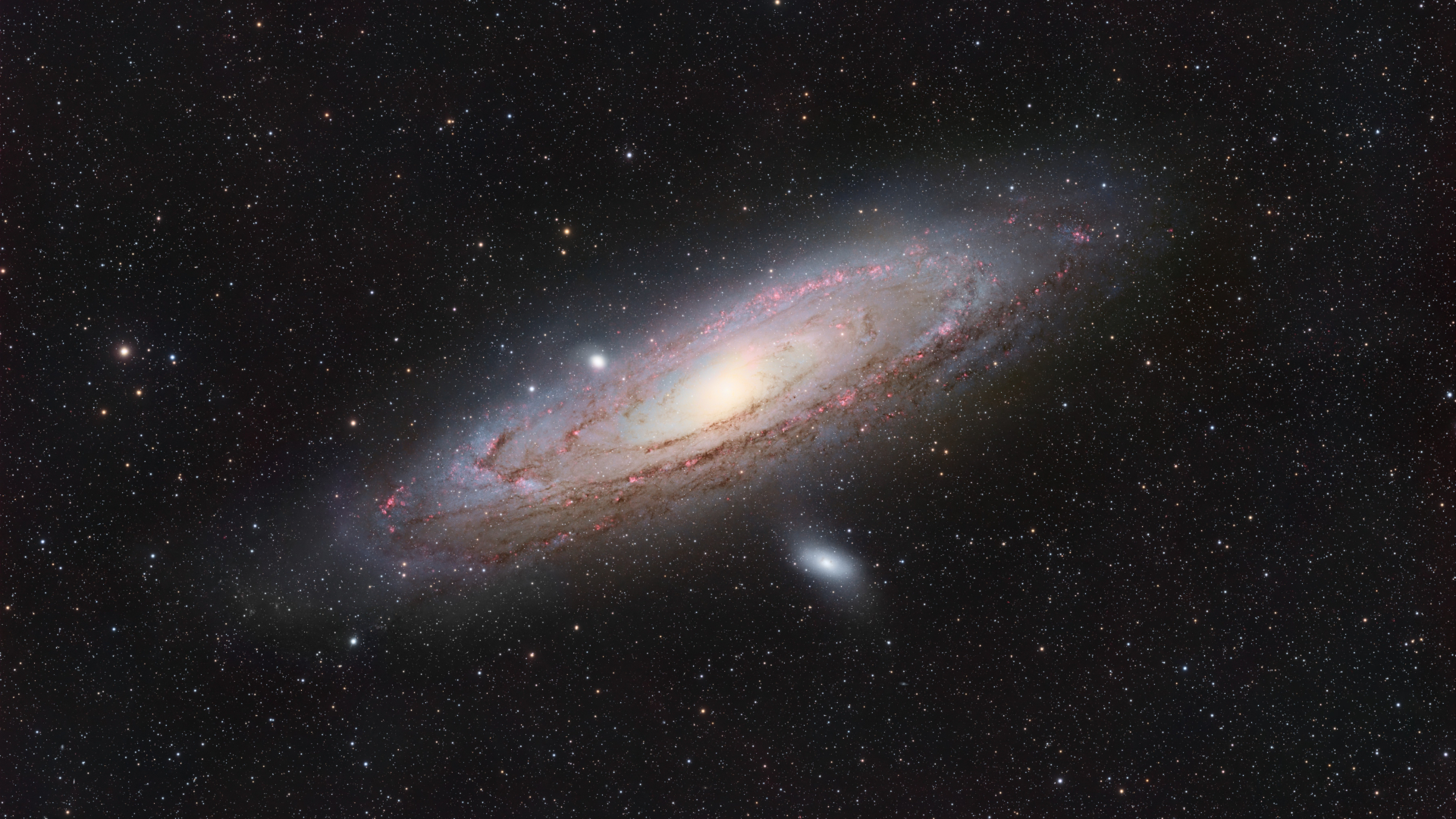From - Space.com
By - Anthony Wood
Edited by - Amal Udawatta

Astrophotographer Ronald Brecher has captured a stunning image of our neighboring spiral galaxy, Andromeda, shining in deep space some 2.5 million light-years from Earth.
Brecher's image captured spectacular detail in the sweeping spiral arms of the 260,000 light-year-wide galaxy gleaming with the intense light of star formation. Dense dust lanes can be seen coiling around Andromeda's glowing galactic center, which is thought to house a supermassive black hole 140 million times more massive than our sun.
The nearby satellite galaxy M32 can also be seen as a bright ball on the upper edge of Andromeda's disk while the milky splash of light below is in fact the elliptical galaxy Messier 110, which plays host to around 10 billion stars of its own.
Brecher captured Andromeda's ancient light over the course of 38 hours between Aug. 17 to Sept. 2 earlier this year from his home in Guelph, Canada, using a Sky-Watcher Esprit 70 EDX refractor with a QHY367C Pro camera and accompanying accoutrements.
"Whenever I look at this galaxy — which is often with my naked eye — I think of the light reaching my eye having begun its journey before humans evolved on earth," wrote Brecher in a post on his website. "Pretty cool".
The Andromeda Galaxy can be found less than 10 degrees to the upper left of Mirach — the brightest star in the Andromeda constellation — in the hours following sunset in late September. Remember, the span of your clenched fist accounts for 10 degrees of sky!
Until recently, many astronomers were convinced the Andromeda Galaxy would collide and merge with our galaxy in around 4 billion years. However, recent studies have cast doubt on the entwined fates of our galaxies, with University of Helsinki researcher Til Sawala stating "the probability went from near-certainty to a coin flip" according to his research.
- Get link
- X
- Other Apps
Labels
Astronomy- Get link
- X
- Other Apps
Comments
Post a Comment